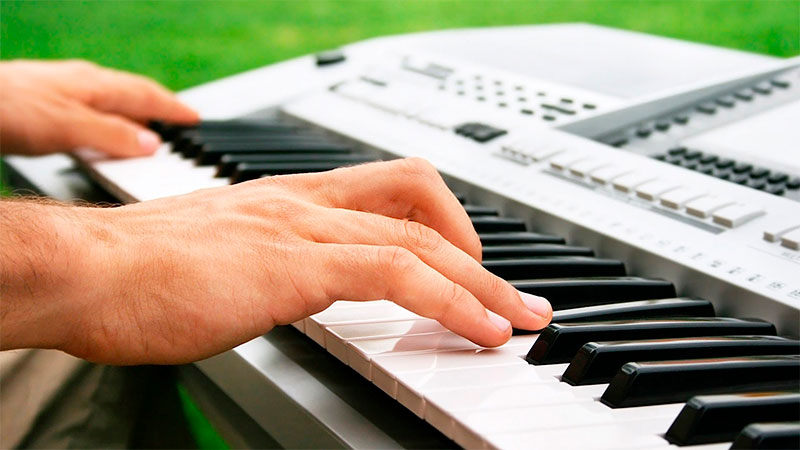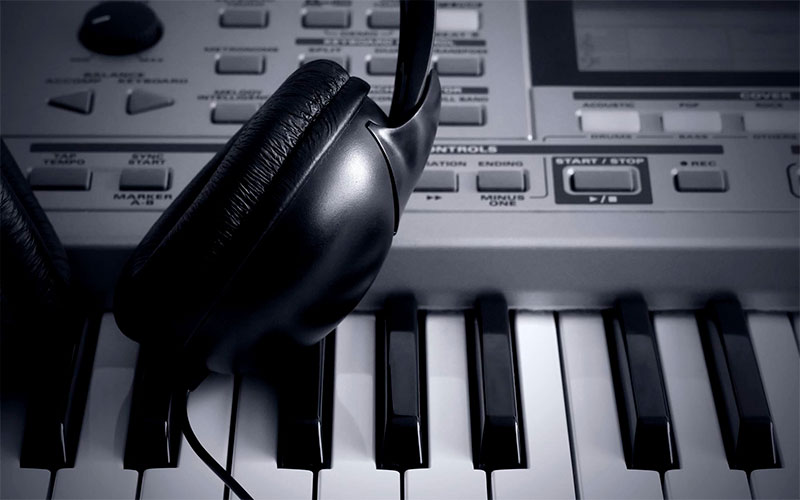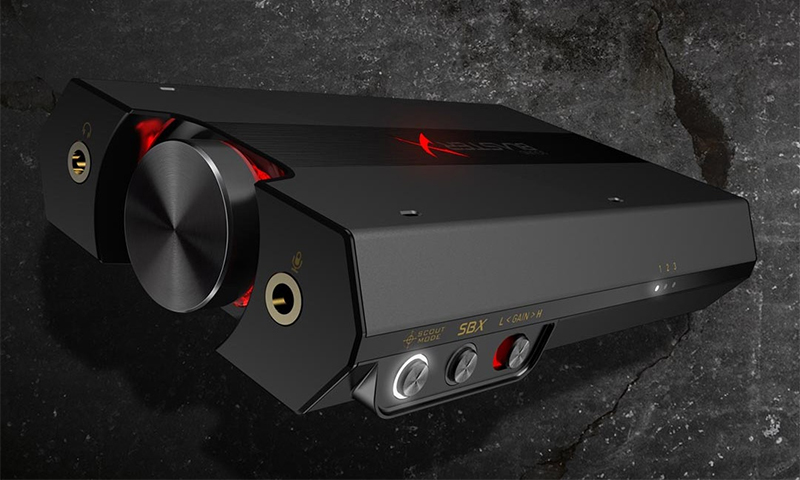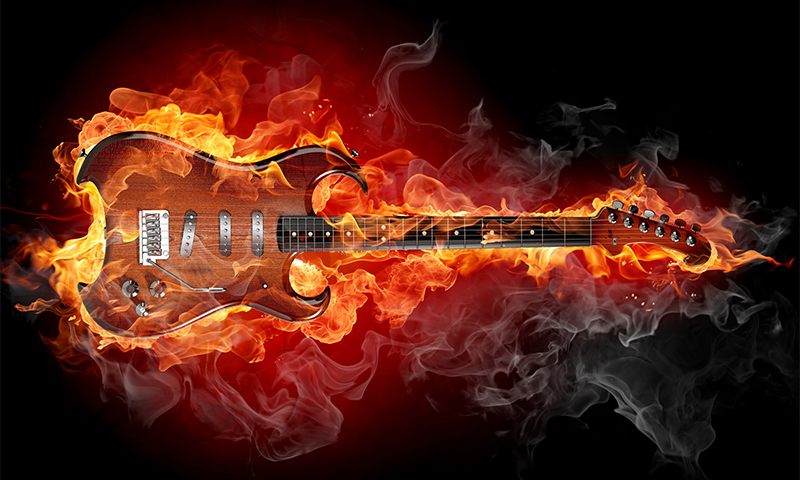Playing a musical instrument allows you to relax yourself and please the family or guests. Having placed a synthesizer in an apartment or house, you can occupy a minimum of space and be distracted from everyday problems. It is useful to engage in it and the children for self-development or parallel study in the music school. Use this technique and for professional purposes on performances. The synthesizer may differ in the way the sound is played, the number of keys and additional functions, so the article below will help you choose the equipment specifically for your purposes.

Content:
The best manufacturers of synthesizers - which company to choose
When there is no time to study the differences of synthesizers and you want to buy a device for a hobby or a child, you can choose products from proven companies:
1. Casio
2. Akai
3. Korg
4. Yamaha
5. Medeli
Each individual model may differ significantly in the range of sounds and possibilities of use, so you should read an overview of the disadvantages and advantages of these popular devices.
In order to choose a synthesizer solely by parameters, having understood their influence on the game, we offer practical tips further.
The principle of operation and the device synthesizer

The synthesizer allows you to play music at home, in a group, to perform in a cafe or at events (weddings, concerts). Such devices are bought by children for entertainment, serious study of music or as a hobby for adults. Use them and professional teams.
The compact size of the equipment is convenient for transportation - it fits in the back seat of the car. It is easy to place anywhere on the stage and even in a small room. Audio output allows you to connect the equipment to a sound amplifier and make the volume sufficient for a large audience.
Synthesizers differ a great variety of sounds. You can play the melody on the keys, but it will play as a guitar, drum or violin. The device allows you to mix these sounds and arrange the author's solos with additional inclusions and background. Due to this, even novice musicians are able, in a short time, to learn compositions rich in sound. On the classical piano this can be achieved only after several years of hard training.
The principle of operation of the device is simple. Pressing the keys creates a contact closure and sends an electrical signal. The latter is processed by a processor or chips that convert it into sound waves. Changing the voltage characteristics allows you to get a variety of timbres.
The synthesizer device includes the following elements:
- microcontroller;
- capacitor assembly;
- LPF;
- GUN;
- buffer cascade;
- display unit.
On the outside there is a keyboard with speakers, a pitch bend wheel, a voice control area, a list of styles, buttons with effects, a zone for adjusting rhythms and accompaniment. Most models have a display to display the current settings.
Kinds of synthesizers
Despite the large number of differences in the internal structure, all models of synthesizers are divided into two types, which determine their capabilities.
Amateur

Such tools can be both the most primitive, and with a variety of functions. The simplest models are bought for children for development and educational process. They can create their own simple music or entertain guests. More advanced models are suitable for amateur music lessons for an adult who has previously played and would like to restore skills.
Advantages:
- acceptable cost;
- there is an auto-accompaniment function;
- the presence of the backlight;
- compact;
- there are different styles;
- Beautiful design;
- low weight
Disadvantages:
- few timbres;
- few octaves on some models;
- LCD screens;
- poor sound quality.
Professional

Such synthesizers are used for serious music lessons, playing in a group or at large performances. That they can be seen on the scene of a restaurant or cafe.
The models are distinguished by a large number of reproduced sounds, recording and instant work with the created file. There are devices without a keyboard in the form of PC modules. The sound quality is very expressive and beautiful.
Advantages:
- selection of keys from 61 to 88;
- color screens;
- selection by pressing method (active, passive, hammer);
- voice recording and processing;
- number of timbres up to 700;
- polyphony with up to 200 voices;
- saturation effects.
Disadvantages:
- high price;
- warm up;
- for digital models, expressiveness is lost at multi-instrument concerts.
Synthesizer selection options

It is not difficult to choose a synthesizer if you know its key characteristics and understand their influence on the process.
Number of keys
Their number determines how many octaves the device has and determines the range of reproducible parts. Some pieces are played on two or three octaves, while others require five or more.
To entertain children 5-7 years old, you can purchase a device with up to 32 keys, which will allow you to create simple melodies arranged by additional sounds. Children will be delighted, and parents will be able to save.
For serious study of classical music, you will need a synthesizer with 88 keys, the number of which is identical to a piano. This will allow the child or adult to complete tasks from the music school at home. For a serious hobby or a game in a team, a 61-key model is needed. With its help, it will turn out to play all genres, and it will be more compact for transportation and installation.
Auto accompaniment
This is an additional function that is able to adapt to the chosen style of music and impose its own arrangement. The performer puts the chords with his left hand, and the device chooses additional accompaniment in agreement in the genre being played (drum beats, wind instrument sounds, bass from the guitar, etc.) Right-handed musician leads the main part. This creates the feeling that a whole ensemble is performing, although there can be only one person on the stage.
The presence of auto accompaniment will come in handy for amateurs, which will help them master simple lots, and the equipment will complement and enrich their work. So it will impress guests and relatives, without spending many months in painful rehearsals. Even this feature is beneficial to fans who play in small cafes and restaurants.
To accommodate the speaker does not require a large stage, and the diversity of the repertoire will suit everyone. Depending on the model, there can be from 30 to 200 inline styles. For the hobby is enough and the minimum value. Amateur group to perform in a cafe needs a large range of up to 120 styles.
Professional musicians play synthesizers without auto-accompaniment. They do not need to be accompanied by additional sounds to the taste of the instrument, and they clearly know for themselves what they want to get in the end. But for this you need to masterly own a keyboard device, because the pure game of an amateur will be felt scarcely.
Keyboard type
Keys on different synthesizer models can be of several types:
1. Mechanical
Play sound when pressed, like a button. The volume is set on the instrument, and the force of hitting the key does not affect the strength of the sound. This is a simple option for a frivolous child play.
2. Dynamic
They are also called active, because the power of touching the fingers is proportionally reflected in the volume of the sound. So you can play and put feelings into music, gently fingering the subtle introductions, and firmly pressing the keys at the climax.This is suitable for serious hobby or professional activities.
3. Hammer
It has more weight and is very similar to the work of the piano. Pressing such a key requires some effort, which is good for students of musical institutions, so that devices for practicing at home and in the hall do not differ in the spring properties of the keyboard.
4. Sensory
It works by touch without pressing. Convenient for mixing sounds at discos, cafes or home games.
Sequencer
To record the work in real time, an additional module in the synthesizer is needed. This will allow the equipment to create and memorize new melodies obtained during experiments. The technique saves data not in the form of music as on a dictaphone, but as a combination of lost notes with all the characteristics of their performance.
It will be extremely useful for professionals to truly create their musical instrument. The restrictions on recording are important here. A good indicator will be for 5 songs, which does not require frequent work with files to save on a third-party device. For home use to buy such a synthesizer is not worth it.
Sampling
Synthesizers with this feature are more expensive. Such devices are able to simulate and mix short segments of sound (voice, birds singing, orchestra). Recording is done via audio output and microphone. The resulting fragments are distributed on the keyboard so that pressing plays one particle of the received sound. So you can create an interesting background or a unique solo. It is suitable for entertaining at home or playing at a wedding in a cafe where you can amuse guests or create an original track.
Backlight
The presence of the backlight allows you to quickly learn the work, not looking at the notes, and even without knowing them. To do this, start a composition from the device’s memory, and the keys start flashing in red with the sequence and speed at which you need to press them in order to lead the party.
It is very popular with children or suitable for family holidays. Learning comes down to a reaction to pressing, and a little practice leads to confident play and the surprise of relatives. Of course, this function is not required for professionals. It will turn out to be superfluous also for studying piano playing on notes, where it is required to memorize the meaning of the keys, and not to beat the first one that caught fire.
Built-in timbres
Under this parameter, the possibilities of the equipment for a variety of sound are hidden. The selection range varies from 10 to 700 and more. The timbre implies individual sounds of instruments (guitar, pipe, violins, drums), and each species is able to create many of its sounds. For example, you can play both a serenade on high frets and a bass part on a guitar. And such diversity opportunities apply to all tools.
Therefore, the greater the number of timbres, the more sounds the synthesizer can “parody”, and the richer its playing will be. For home recreation and hobby enough models with an indicator of 200-300. For professional activity, in order to model and experiment without restrictions, choose a technique with 500-700 timbres.
In addition to the number of important indicator of simultaneous sound. The device will not be able to immediately reproduce all 400 sounds, so the complexity of the composition depends on the polyphony. The simplest models give 20 separate timbres at a time. This is enough for children and hobbies. The performance in the cafe is organized at the proper level with polyphony 32-70. In the case of professional activity, synthesizers with polyphony of 100 and higher are used.
Playback method
A synthesizer is an electrical device where the sound is obtained not from a mechanical strike of a key on a taut string, but by closing the contact and processing the signal with various devices. Analog synthesizers use sound wave generators, and the type and length are changed by affecting the characteristics of an electrical signal passed through the microchips.
This is a physical process, the work of which is suitable for a collective performance on the stage with a large number of musical instruments. So the synthesizer batch is not “lost” on the general background.
In all other cases, it is worth using the digital method of sound reproduction, where the central processor is responsible for this, as in a computer. This gives a compact body size, less heat during long-term work and a large range of sounds, which is suitable for an amateur game, performance in a cafe or at a small event.
Effects
The synthesizer can not only repeat all sorts of tones or create new ones, but also modify existing familiar sounds. To do this, use effects: reverb, chorus and others. They allow you to stretch the wave or reproduce a chord with multiple copies, imitating the choral sound. The number of effects can be from 3 to 50.
In the case of amateur activities, you can buy a model with an indicator of 3-5. For performances in the restaurant the young group will need a tool with 15 effects. Professionals prefer to work with maximum performance.
Which synthesizer to choose

1. For a frivolous play of children, you can take an instrument with 49-61 keys, auto-accompaniment, mechanical buttons, lights, 30 styles and digital sound processing. The number of effects 3-5.
2. To study, a child or an adult will need a 88-key synthesizer with a hammer push, 20-40 styles of automatic chord accompaniment, 300 built-in timbres, digital, with polyphony of 100 units.
3. Beginning teams to play in a cafe need equipment with 61 keys, dynamic pressing, auto accompaniment, 120 styles and 500 timbres. Talented musicians need a sequencer. Polyphony in the range of 50-100.
4. For professional activities and performances in front of a large audience, you will need a 61-key synthesizer, with analog sound reproduction, dynamic active keys, a sequencer, 700 timbres and no auto-accompaniment. Polyphony about 200.
How much does a synthesizer cost

1. Children for entertainment, you can buy a device for 3500-8000 rubles.
2. Studying in a music school will be easy with the device for 19000-39000 rubles.
3. An amateur game in a group or in a cafe is carried out with equipment for 20000-40000 rubles.
4. Professional tool costs 50000-90000 rubles.
It will be interesting to friends too







